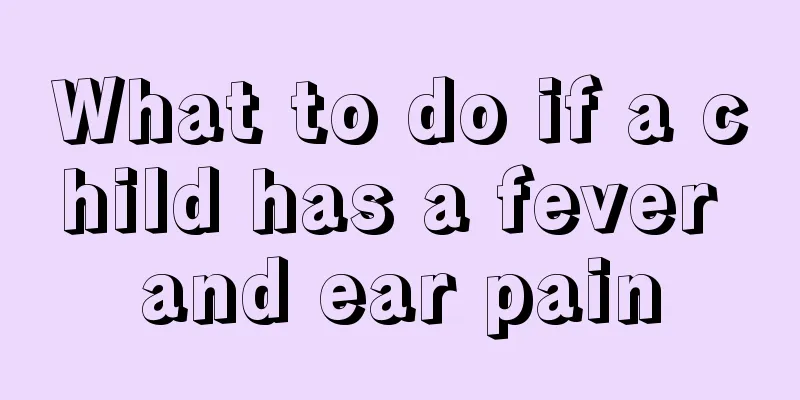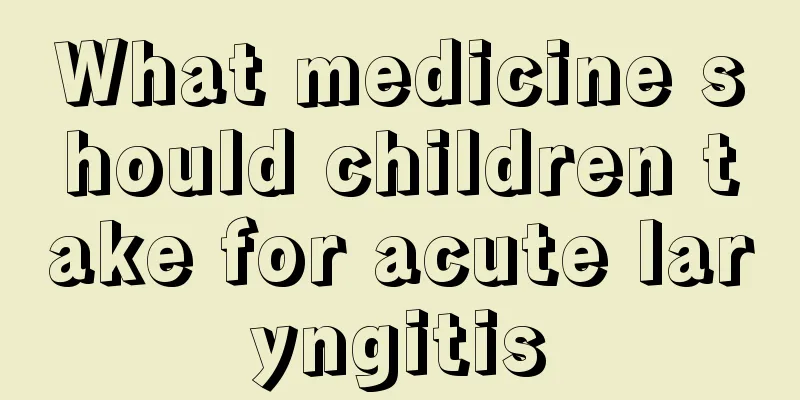The child has a fever and is shivering

|
When children have a fever, they will feel that they have some other symptoms, such as shaking hands. This is very common. Then when it happens, they must take some medicines with antipyretic effects, and they need to take corresponding drug treatment according to the exact temperature of their specific fever. In this way, they can prescribe the right medicine and avoid misdiagnosis during the medication process. 1. Fever degree classification (axillary table) (1) Low fever 37.5~38.0℃; (2) moderate fever 38.1-39.0°C; (3) High fever 39.1~40.0℃; (4) Hyperthermia above 40°C. 2. According to the duration of fever, it can be divided into (1) Short-term fever lasting less than 2 weeks, often accompanied by local symptoms and signs; (2) Long-term fever lasting ≥ 2 weeks, with some patients having no obvious symptoms or signs; (3) Fever of unknown origin (FUO): Fever persists or is intermittent for more than 3 weeks and cannot be diagnosed through physical examination and routine auxiliary examinations; (4) Chronic low-grade fever: Low-grade fever lasts for more than one month. 3. Common fever types Children's fever patterns are not as typical as those in adults. In recent years, due to the widespread use of antibiotics and the application of corticosteroids, fever patterns have changed, and the significance of fever patterns for differential diagnosis of diseases has been affected. (1) Persistent fever with persistent fever and small fluctuations in body temperature, generally not exceeding 0.6°C; (2) Remittent fever: body temperature fluctuates by 2 to 3°C but does not return to normal; (3) Intermittent fever returns to normal for at least 24 hours before fever reappears; (4) Bimodal fever: There are two peaks of fever within 24 hours; (5) Recurrent or relapsing fever with multiple episodes of fever, each lasting several days, with normal body temperature for 1 to several days between episodes; (6) Irregular thermal patterns have no definite pattern. 4. Stages of fever During the fever process, due to the constant changes in the contradiction between heat generation and heat dissipation, fever can generally be divided into four stages: (1) Many febrile diseases may not have any symptoms during the prodromal phase. The duration of symptoms in this stage varies according to the specific circumstances of the febrile disease, and is mainly manifested by general discomfort, fatigue, loss of appetite, emotional instability, and low fever. Some exanthematous diseases may have a prodromal rash before the appearance of the systemic rash. For example, during the prodromal stage of measles, Kleinberg spots may appear on the oral mucosa. (2) The temperature rise period is characterized by high heat production and low heat dissipation, so heat production is dominant and the body temperature rises. Symptoms include pale, dry, sweat-free skin, goose bumps, and a cold feeling to the touch. If chills occur, it indicates that a high fever will occur. Young children may experience convulsions at this time. During the chills, the body temperature is mostly above 38°C, and most of the time it reaches the peak of high fever within a few hours, such as malaria, lobar pneumonia, sepsis, drug-induced fever, etc. The above are those with sudden rise in body temperature. A gradual rise in body temperature refers to a fever that starts with a low fever and gradually rises from a low fever to a high fever within a few days. This is called a gradual fever. Those with gradual onset often have prodromal symptoms, most of whom do not have chills, but sometimes they may feel cold, like atypical typhoid fever. Some people present with a sudden rise in fever, which may be caused by a low fever that is ignored. In addition, the body temperature of diseases such as tuberculosis is gradually rising. |
<<: What to do if your child has a fever and wants to sleep
>>: What to do if a child has a fever of 375
Recommend
One and a half year old baby always crying
It is inevitable for babies to cry as they grow u...
At what age is it normal for children to lose their teeth?
The growth and development of children and their ...
What toothpaste is good for children? How to choose
Toothpaste is an everyday necessity in our lives....
What causes a boy’s intestinal gas?
The baby has intestinal hernia, which is commonly...
Benefits of bathing your baby
In daily life, people often take a bath to soothe...
Which deworming medicine is good for children?
Most children need anthelmintics, otherwise they ...
Newborn baby's frightened behavior
The living environment of a newborn must be quiet...
Why does my child’s hands and feet shake when sleeping?
Careful parents will observe that their children&...
Can children eat watermelon when they have a cough?
Children’s physical health has always been a matt...
How to treat yellowing on children's underwear
Underwear is the clothing that is closest to our ...
What should I do if my baby has red bumps on his belly?
If your baby has sensitive skin and has red bumps...
What to do if your baby is bitten by a child
When many babies fall or get hurt, their parents ...
Causes of childhood leukemia
Leukemia is a disease that is seriously harmful t...
What to do if infants and young children have red and swollen throats
Newborns have very low immunity and their organs ...
What should I do if my child develops slowly?
As parents, we all hope to see our children grow ...









